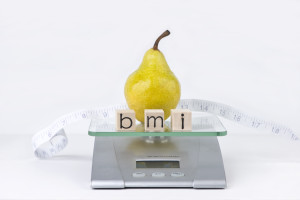To BMI or Not to BMI?
 If you care about your personal fitness, then you probably closely monitor certain data factors. You document your PRs, you track distance on your GPS, and you measure your bike speed in MPHs. You also likely monitor your BMI, or body mass index, especially if you are monitoring your weight as part of your fitness plan. While tracking and measuring various fitness measurements can help you accomplish your goals, before you start to monitor your fitness progress using BMI as your sole benchmark, understand what BMI really means, and why it may not be a fair indicator of fitness.
If you care about your personal fitness, then you probably closely monitor certain data factors. You document your PRs, you track distance on your GPS, and you measure your bike speed in MPHs. You also likely monitor your BMI, or body mass index, especially if you are monitoring your weight as part of your fitness plan. While tracking and measuring various fitness measurements can help you accomplish your goals, before you start to monitor your fitness progress using BMI as your sole benchmark, understand what BMI really means, and why it may not be a fair indicator of fitness.
What is BMI?
BMI, or body mass index, is a simple mathematical formula that uses a person’s height and weight to determine his obesity. To calculate your BMI, divide your weight in pounds by your height in inches squared, then multiply the results by 703. The resulting BMI numbers are grouped into categories to determine whether your weight is normal, or if you are under or overweight:
- Underweight = <18.5
- Normal weight = 18.5 – 24.9
- Overweight = 25 – 29.9
- Obese = BMI of 30 or greater
BMI as a National Benchmark
BMI became a nationally-recognized standard measurement in June 1998 when the National Institutes of Health announced that BMI was to become their obesity measurement standard. The issue that many have identified with relying on a single BMI number as an indication of obesity is that the BMI calculation methodology skews a limited set of data factors and could falsely indicate that a fit, healthy person with little fat is overweight, when in reality, they are healthy and fit.
BMI as a Faulty Measure of Fitness
While BMI takes into consideration height and weight in calculating potential obesity, it is not a diagnostic tool. BMI fails to take into consideration several key factors of fitness, such as age, gender, waist size, and proper proportions of bone to muscle to fat. For example, since bone is denser than muscle, and twice as dense as fat, BMI does not properly account for those who have strong bones, dense muscle tone, and low levels of fat. Such individuals could calculate for themselves a BMI in the overweight range when truly, they are not at a high risk of the conditions complicated by obesity.
A Fair Measure of Fitness
If you are looking for a more accurate fitness calculation, many experts agree that waist circumference is a better indication of obesity than BMI. A waist circumference that is greater than 40 inches for men and 35 inches for women has been linked to a higher risk of type 2 diabetes, high blood pressure, abnormal cholesterol levels, and heart disease when BMI is 25 to 34.9.
Of course, if you are looking for the most reliable source of weight advice, you can always rely on guidance from your physician. To truly calculate your obesity risk, or to determine your level of “fitness,” a health care professional will assess a variety of factors, such as body fat percentage, diet, exercise patterns, and family history.
More